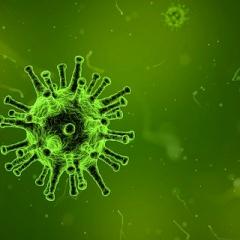Comprehensive surveillance is needed to monitor human disease epidemics, according to Chinese and Australian researchers analysing a Chinese outbreak of the highly infectious childhood disease, scarlet fever.
Study co-author, Director of The University of Queensland's Australian Infectious Diseases Centre Professor Mark Walker said the 2011-2016 outbreak disease incidence was almost 3 times higher than that seen in the last 30 years.
Dr Yuanhai You, the first author of the study, said "The Chinese Center for Disease Control and Prevention (China CDC) in Beijing continues to investigate the underlying reasons for the outbreak against the background of rapid development of the Chinese economy; improvement in the national health system, and increasing mobility of the Chinese domestic and international population.
Study co-author, Deputy director of The National Institute for Communicable Disease Control and Prevention, China CDC Professor Jianzhong Zhang said "Many factors may interact in this outbreak, including streptococcal isolates with propensity to cause disease, environmental factors, climate, living standards, population movement, host population genetics and herd immunity; such factors may have influenced changes in the numbers and geographic distribution of cases."
Professor Walker said scarlet fever outbreaks began in 2011 in mainland China, Hong Kong, and South Korea, and in 2014 an epidemic was reported in the United Kingdom, although there has not yet been an Australian outbreak.
"Despite the epidemic lasting over six years, there had not been a comprehensive nationwide epidemiological description at the epicenter of the North Asia outbreak," Dr Yuanhai You said.
"The new study, led by theChina CDC, used epidemiological data and molecular analysis to address this issue.
Researchers found the highest incidence in the Chinese outbreak in children aged five years, with kindergarten children accounting for 44 per cent of cases.
The highest incidence was reported in males in May and June (early summer) and December (winter), in Beijing, Shanghai and northern provinces.
"It also collected both historical and outbreak-related strains of the bacteria causing the disease from distinct geographic regions of mainland China, and used whole genome sequencing to gain insight into genomic evolution, virulence and antimicrobial resistance."
Professor Walker said the study compared information from the Chinese outbreak with information collected from Hong Kong and UK outbreaks.
Professor Walker said the new study identified various antibiotic-resistant bacterial strains, and found Hong Kong strains in mainland China, suggesting a role in the selection and expansion of scarlet fever lineages in China.
He said scarlet fever ranked as one of the most severe infectious diseases before the widespread use of antibiotics in the 1940s.
Scarlet fever symptoms include a red rash on the skin, sore throat, fever, headache and nausea, and severe illnesses treated with antibiotics, although some strains are becoming more resistant to treatment.
"It's caused by Group A Streptococcus bacteria, which is responsible for other diseases including pharyngitis, tonsillitis, impetigo, toxic shock and necrotizing fasciitis," he said.
The study, which also involved researchers from the University of Melbourne and UQ's Schools of Public Health and Chemistry and Molecular Biosciences, is published in EBioMedicine: Scarlet Fever Epidemic in China Caused by Streptococcus pyogenes Serotype M12: Epidemiologic and Molecular Analysis. You Y, Davies MR, Protani M, McIntyre L, Walker MJ, Zhang J. EBioMedicine. 2018 Jan 11. pii: S2352-3964(18)30014-8. doi: 10.1016/j.ebiom.2018.01.010. [Epub ahead of print] PMID:29342444
This work was funded by the State Key Laboratory of Infectious Disease Prevention and Control of the China CDC, and the National Health and Medical Research Council of Australia.
Media: Professor Mark Walker, mark.walker@uq.edu.au, +61 7 3346 1623 (Australia)
Dr. Yuanhai You (China), youyuanhai@icdc.cn (China)



